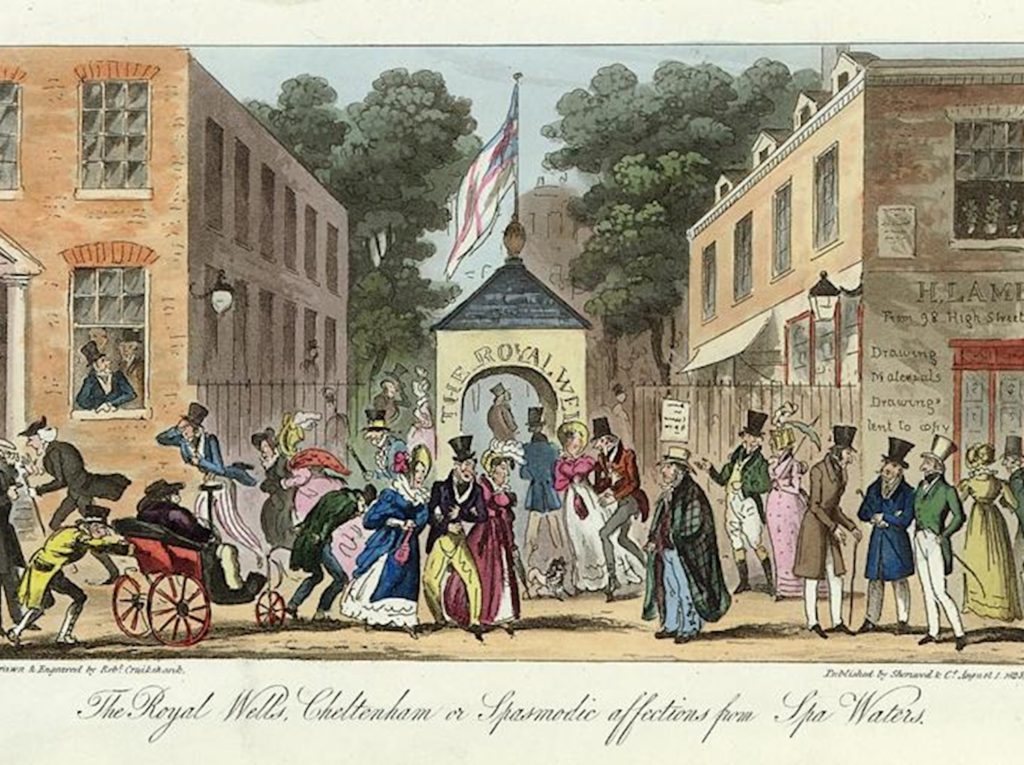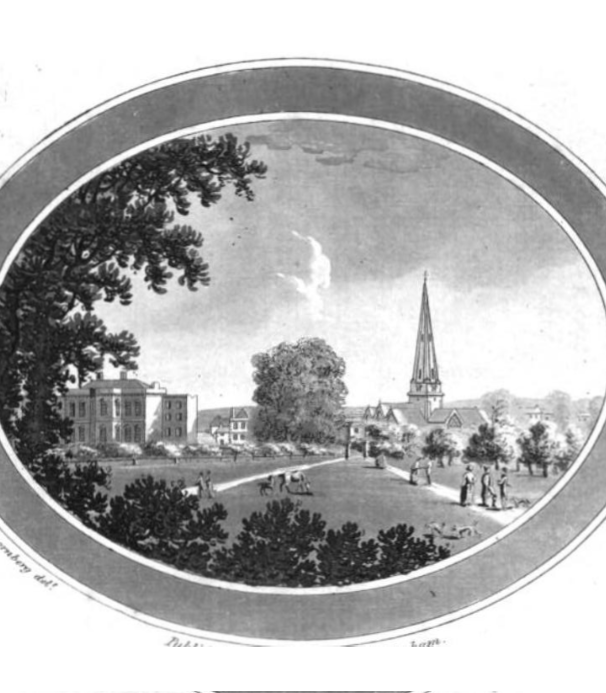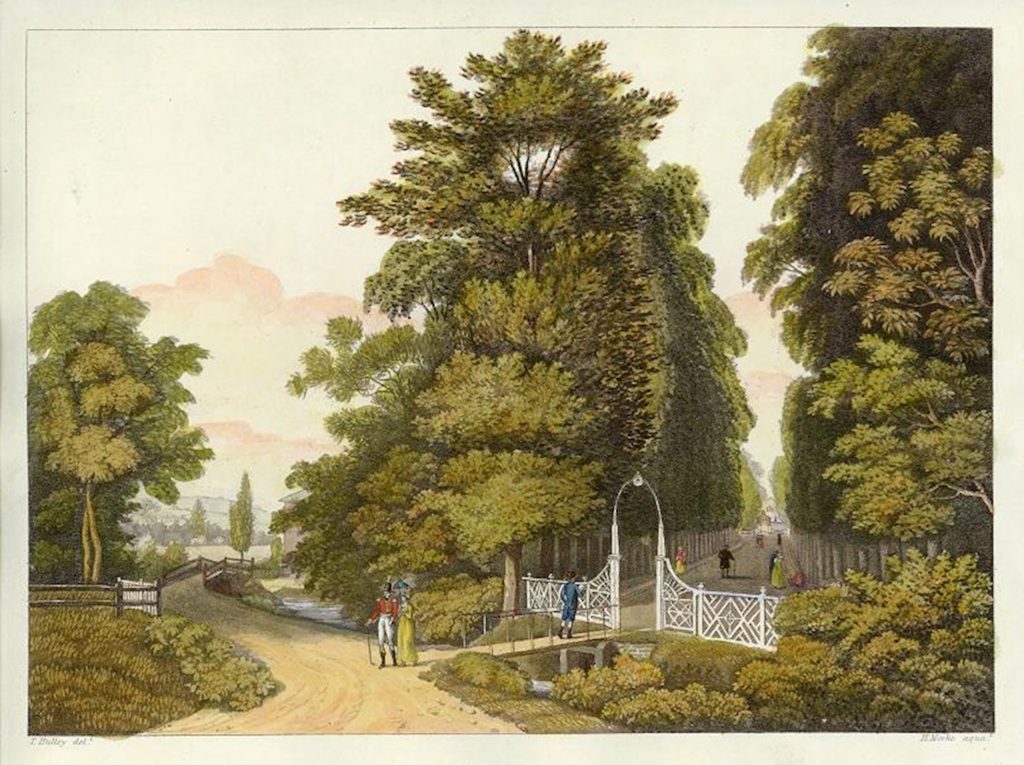
I need a holiday. Badly. You probably feel the same. But since I can’t go IRL, I figured why not go in my mind (does it sound like I lost the plot? I may have).

In the tomes of Regency Romance, you may have seen the phrase “Cheltenham tragedy” a time or twenty. It is widely suspected now that this one of Georgette Heyer’s invented slang/expressions (read this excellent blog post about this: http://lordsoftheseventhhouse.blogspot.com/2010/01/regency-slang.html).
Nonetheless, Cheltenham would have been on the minds of the Upper Orders during the Regency, and today stands as “England’s most complete Regency town” (https://www.discoverbritainmag.com/regency-britain/). As a spa town in the manner of Bath, its mineral springs were discovered in 1716 and that ushered in the era of a resort town.
Griffith’s New Historical Description of Cheltenham and Its Vicinity (1826)
Nestled in the Vale of Evesham, a fertile and extensive vale, it picturesque rural beauty would have been a draw for people looking for rest and relaxation in the warm summer months (Dibdin, 1803). Here is a more full picture of Cheltenham in 1803:
Dibdin, 1803, p21-23
Dibdin goes on to describe the abundance of meat, poultry, vegetables and fish which were available at prices more affordable than London. In 1803 there were five inns, four with “good chaises and horses” and generally commodious accommodations with reasonable rates. Their names were the Plough, George, Fleece, Crown and Lamb. Dibdin also lists several boarding houses, one hotel, and describes at length the assembly rooms. Most nights in the summer were cards, but Mondays and Fridays hosted balls.

The spas on offer, country rambles, wholesome food and subdued entertainments were just the thing many Londoners needed after burning themselves out during the Season. And indeed, just envisioning the place and all its beauty has worked a bit of restorative magic on me.
For a bit more on visiting spa towns during the Regency, check out this post:
https://www.regrom.com/2019/03/22/regency-reader-questions-spas-and-bathing/
I found a delightful blog that aims to identify the Whos Who in Cheltenham history with some more obscure characters including builders and business people: https://cheltonia.wordpress.com/cheltenham-whos-who/
Dibdin, T. F., Ruff, H. (1803). The history of Cheltenham, and account of its environs. With A concise display of the county of Glocester; also an appendix. United Kingdom: (n.p.).










